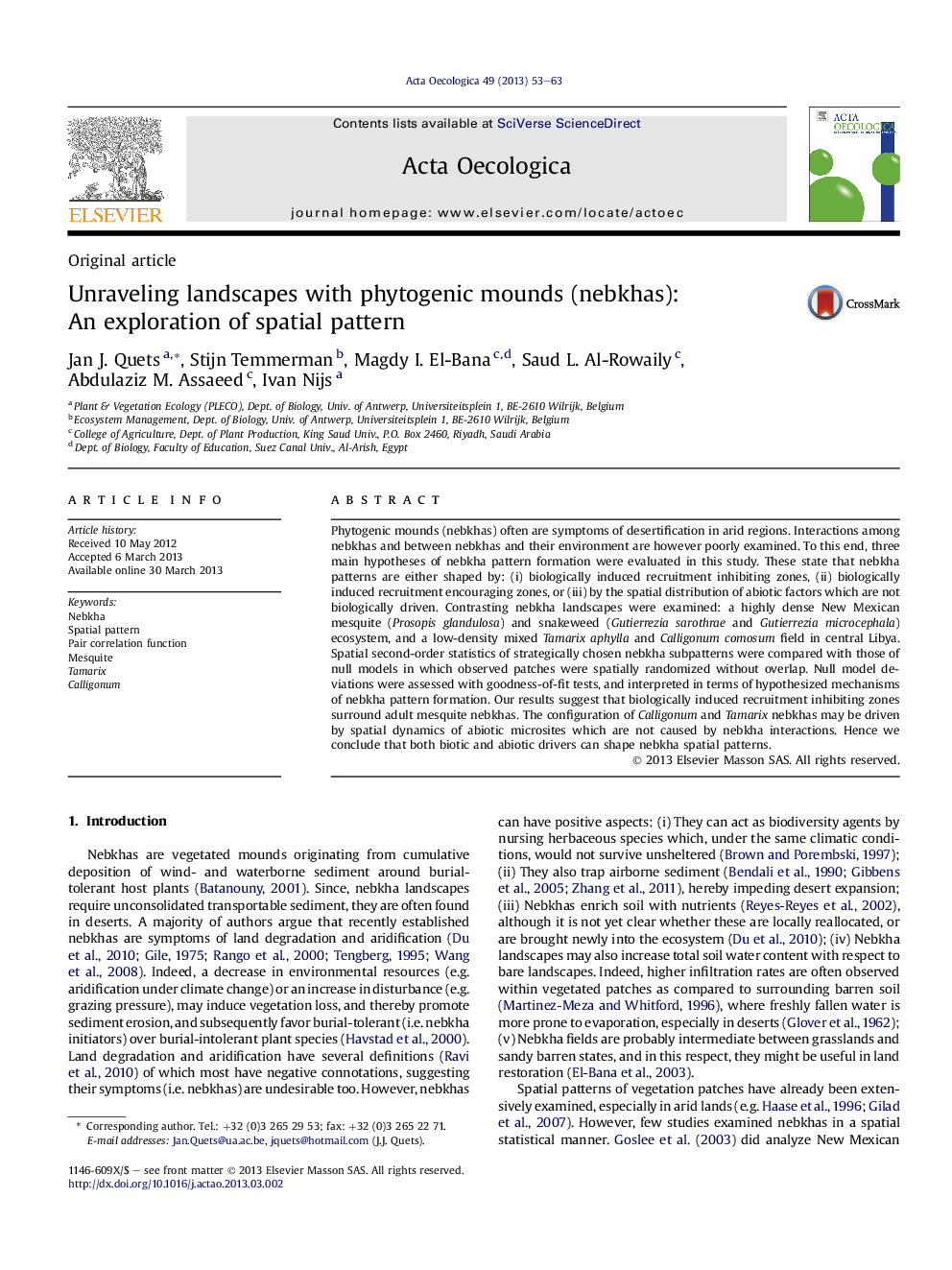| Article ID | Journal | Published Year | Pages | File Type |
|---|---|---|---|---|
| 6297373 | Acta Oecologica | 2013 | 11 Pages |
Abstract
Phytogenic mounds (nebkhas) often are symptoms of desertification in arid regions. Interactions among nebkhas and between nebkhas and their environment are however poorly examined. To this end, three main hypotheses of nebkha pattern formation were evaluated in this study. These state that nebkha patterns are either shaped by: (i) biologically induced recruitment inhibiting zones, (ii) biologically induced recruitment encouraging zones, or (iii) by the spatial distribution of abiotic factors which are not biologically driven. Contrasting nebkha landscapes were examined: a highly dense New Mexican mesquite (Prosopis glandulosa) and snakeweed (Gutierrezia sarothrae and Gutierrezia microcephala) ecosystem, and a low-density mixed Tamarix aphylla and Calligonum comosum field in central Libya. Spatial second-order statistics of strategically chosen nebkha subpatterns were compared with those of null models in which observed patches were spatially randomized without overlap. Null model deviations were assessed with goodness-of-fit tests, and interpreted in terms of hypothesized mechanisms of nebkha pattern formation. Our results suggest that biologically induced recruitment inhibiting zones surround adult mesquite nebkhas. The configuration of Calligonum and Tamarix nebkhas may be driven by spatial dynamics of abiotic microsites which are not caused by nebkha interactions. Hence we conclude that both biotic and abiotic drivers can shape nebkha spatial patterns.
Related Topics
Life Sciences
Agricultural and Biological Sciences
Ecology, Evolution, Behavior and Systematics
Authors
Jan J. Quets, Stijn Temmerman, Magdy I. El-Bana, Saud L. Al-Rowaily, Abdulaziz M. Assaeed, Ivan Nijs,
